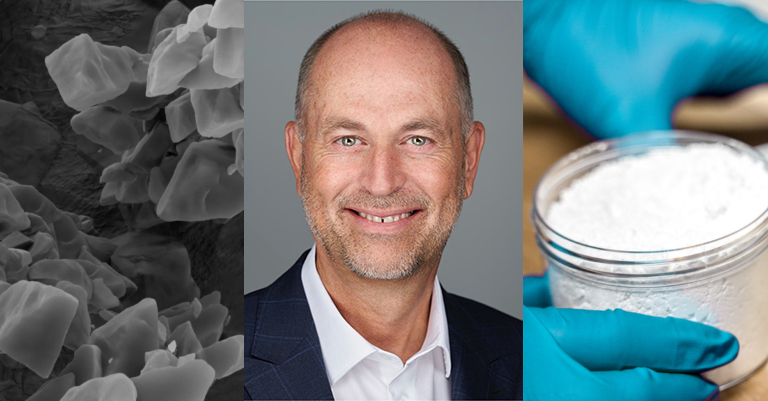
Svante secures commercial supply of sorbent materials with BASF for carbon capture
Mike Edwards
News People in Process aluminum BASF carbon capture cement chemicals CO2 decarbonizing hydrogen MOF pulp and paper sorbent material steel Svante Claude Letourneau, president and CEO of Svante: “This MOF material, combined with our proprietary structured adsorption filters, is a game-changer for the carbon capture and removal industry."
Claude Letourneau, president and CEO of Svante: “This MOF material, combined with our proprietary structured adsorption filters, is a game-changer for the carbon capture and removal industry." Svante has announced that it has entered into an arm’s length Commercial Supply Agreement with BASF to scale up its proprietary sorbent material, Calgary Framework 20 (CALF-20), used in Svante’s carbon capture process.
This metal-organic framework (MOF) sorbent can capture up to 95% of carbon dioxide (CO2) emitted from industrial sources, such as cement and blue hydrogen plants, using rapid solid adsorption and low-pressure steam.
Vancouver-based Svante has pioneered carbon capture and removal technology using structured adsorbent beds, known as “filters.” The company is the most advanced industry player in the use of solid sorbents for carbon capture, with the world’s first commercially available MOF nanomaterial filter manufacturing facility in Vancouver.
This commercial supply agreement with BASF will unlock the next phase of Svante’s growth, the company says, scaling carbon capture filter manufacturing up to multi-million-tonne capacity and implementing hundreds of large-scale carbon capture and storage (CCS) facilities by 2030.
Svante’s modular and solid sorbent technology is designed to capture CO2 from industrial flue gas. It then concentrates it into a high purity 95% pipeline-grade CO2 and releases it for safe storage or further industrial use. Its unique approach is tailored specifically to the challenges of separating CO₂ from nitrogen in diluted flue gas, which is typically emitted in large volumes at low pressures and in dilute concentrations. Svante’s technology will play a key role in decarbonizing industrial activity in diverse fields including hydrogen, pulp and paper, cement, steel, aluminum, and chemicals.
Svante and BASF have been working collaboratively for the last two years to scale up CALF-20, which acts as a sponge for adsorbing CO2. Results of their research, published in the international peer-reviewed journal, Science, in December 2021, demonstrated CALF-20’s unique resistance to oxidation and water vapour, which allows CO2 to be captured at a low cost, using Svante’s proprietary structured adsorbent filters.
Solid sorbents are a step change for carbon capture, but the challenge is to merge all of their desirable features into a robust framework material with a low manufacturing cost. CALF-20 coupled with Svante’s filter addresses this challenge and captures CO2 with high capacity and selectivity over water.
“For high-performance CO2 capture and removal, steam stripping — where direct contact steam is used to flush CO2 out of the sorbent — has been a sort of ‘holy grail’ in the field. It is seen as the most effective way to do it.” said Claude Letourneau, president and CEO of Svante.
“This MOF material, combined with our proprietary structured adsorption filters, is a game-changer for the carbon capture and removal industry. We have the right technology to reduce the capital cost of CO2 capture. It is modular and adaptable.
“Now, we need to scale up this technology and commercialize it to create a viable carbon management industry at gigaton scale.”
Svante, in collaboration with BASF, is said to have successfully scaled up the CALF-20 MOF sorbent from laboratory to industrial scale by using a simple low-temperature process in accordance with green chemistry principles. Scalability and low cost of solid sorbents are imperative to the wide adoption of CCS. Up until now, large-scale production of MOF materials at low cost has been a barrier for the gas separation industry.
In addition to scaling up its CALF-20 manufacturing process, Svante has developed a high-volume and low-cost roll-to-roll process for coating the sorbent onto sheets of laminate, which it calls “Sorbent on a Roll”. The laminate is then stacked into high-performance filters, which are now available for both industrial point-source capture and direct air capture.
Print this page